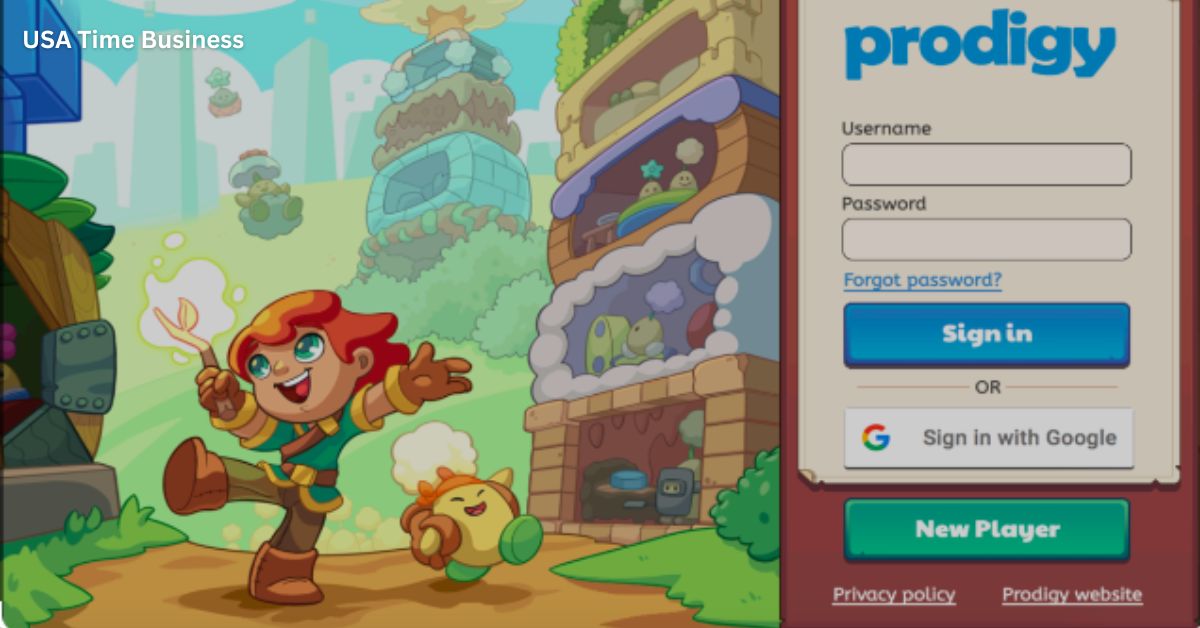Contents
- 1 Introduction to Ùmap
- 2 How Ùmap Works
- 3 Benefits of Using Ùmap
- 4 Different Ways to Use Ùmap
- 5 Examples of Successful Ùmap Integration
- 6 How to Get Started with Ùmap
- 7 Conclusion
- 8 FAQs
- 8.1 1. How much does Ùmap cost?
- 8.2 2. Is Ùmap suitable for small businesses?
- 8.3 3. Can I customize the consistency of my maps in Ùmap?
- 8.4 4. Can I collaborate with others on maps created with Ùmap?
- 8.5 5. Does Ùmap provide customer support?
- 8.6 6. Can I use my existing data sets in Ùmap?
- 8.7 7. Can I embed my maps created with Ùmap into my website or blog?
Introduction to Ùmap
Imagine visualizing davisualizeap, gaining valuable insights and unlocking new opportunities. Well, with Ùmap, you can do just that! Whether you’re a business owner looking to optimize your or a researcher seeking geographic patterns, Ùmap is the ultimate tool for harnessing the power of location intelligence.
This blog post will dive deep into how Ùmap works and explore its numerous benefits. We’ll also look at different ways to utilize this utility platform and showcase real-life examples of successful integrations.
So buckle up and get ready to discover how Ùmap can revolutionize spatial data!
But first things first – let’s understand what exactly Ùmap is and how it functions.
How Ùmap Works
Ùmap is a powerful mapping tool that allows users to create custom maps and visualizatiovisualizationss data from various sources, such as spreadsheets or databases, with geographic information to generate interactive maps.
To use Ùmap, you must first import your data into the platform. This can be done by uploading files directly or connecting to external data sources through APIs. Once your data is imported, you can customize customize it by adding markers, polygons, and lines.
One of the critical features of Ùmap is its ability to apply filters and styles to your data. You can easily categorize code elements on the map based on specific attributes or criteria. This helps organize your organization and makes it easier for users to interpret the information displayed on the map.
Another critical aspect of how Ùmap works is its collaboration capabilities. Multiple users can work together on a single project, making it ideal for teams working remotely or across different locations. Users can edit and update maps in real-time, ensuring everyone can access the most up-to-date information.
Additionally, Ùmap offers integration with other tools, such as WordPress or Drupal, allowing you to embed interactive maps directly into websites or blogs. This enhances user engagement and provides an immersive experience for visitors.
Benefits of Using Ùmap
- Regarding mapping software, Ùmap offers a range of benefits that make it an excellent choice for individuals and businesses alike. One significant advantage is its user-friendly interface. With Ùmap, you don’t need to be a tech expert to create interactive maps. The platform’s intuitive design allows beginners to navigate and customicustomizesily
- Another benefit of using Ùmap is its versatility. Whether planning a hiking trip or analyzing, Ùmap can adapt to your needs. It supports various map layers, including satellite imagery and OpenStreetMap data, allowing you to display information in different formats.
- Ùmap also empowers collaboration among team members. Multiple users can contribute simultaneously, making it ideal for group projects or remote teams working on the same map. This feature streamlines communication and ensures everyone stays up-to-date with the latest changes.
- Additionally, Ùmap provides seamless integration with other popular tools like WordPress and Drupal. This means you can easily embed your maps into websites or content management systems without any hassle.
- Furthermore, using Ùmap’s advanced customizatiocustomizationch as markers, icons, and colours, you can personalize personalize according to your brand image or project requirements—creating visually appealing representations that capture attention.
- The mobile-friendliness of Ùmap is yet another advantage worth mentioning. Your maps will look great on desktop computers and mobile devices thanks to responsive design principles implemented by the developers.
Different Ways to Use Ùmap
Ùmap is a versatile tool that can be used in various ways to enhance your business or personal projects. Here are some different ways you can use Ùmap:
1. Mapping Events:
Whether you’re organizing a organizing, music festival, or community gathering, Ùmap allows you to create interactive maps for your attendees easily. You can mark essential locations like parking areas, restrooms, and food vendors.
2. Real Estate Listings:
If you’re in the real estate industry, Ùmap is an excellent tool for showcasing properties on an interactive map. Potential buyers can see the location of each property and explore nearby amenities such as schools, supermarkets, and parks.
3. Tourist Guides:
Travel agencies and tourism boards can use Ùmap to create virtual tour guides for popular destinations. By highlighting key attractions and providing additional information about each place, visitors will have a more immersive experience while planning their trip.
4. Environmental Monitoring:
Researchers studying environmental changes can utilize Ùmaputilizeck data points such as air quality measurements or wildlife sightings across different regions. This helps visualize and identify areas of concern.
5. Delivery Services:
Businesses can optimize using Ùmap’s routing capabilities. Inputting multiple addresses into the system generates the most efficient route for drivers to follow – saving time and fuel costs.
Universities often have sprawling campuses that need to be clearer for new students or visitors to navigate efficiently. With Ùmap’s indoor mapping feature, educational institutions can provide detailed floor plans with marked classrooms, libraries, and other facilities for more straightforward navigation.
As you explore these different use cases of Ùmap software integration into various industries and projects – remember there are numerous creative possibilities beyond what we’ve mentioned here! So why not give it a try today?
Examples of Successful Ùmap Integration
1. Real Estate:
Many companies have successfully integrated Ùmap into their websites to provide interactive maps for property listings. This allows potential buyers to easily navigate and explore the surrounding area, such as nearby amenities, schools, and transportation options.
2. Tourism and Travel:
Travel agencies and websites have found great value in using Ùmap to showcase popular destinations and attractions. By integrating Ùmap, they can provide detailed maps with markers for hotels, restaurants, landmarks, and other points of interest. This helps travellers plan their trips more efficiently.
3. Event Planning:
Event organizers oorganizersmap to create interactive maps for venues or festival grounds. They can mark stages, food vendors, restrooms, parking areas, and more on the map so attendees can easily find their way around during the event.
4. Environmental Conservation:
Non-profit organizations in environmental conservation have utilized Ùmautilizedse awareness about critical ecological sites or endangered species habitats. An integrated map displaying these locations and relevant information and resources makes it easier for individuals to learn about conservation efforts.
5. Urban Planning:
City governments use Ùmap integrations to engage citizens in urban planning initiatives by showcasing proposed developments or infrastructure projects on interactive maps. This lets residents visualize how hovisualizelans may impact their neighbourhoods or communities.
These are just a few examples of successful integrations of Ùmap across various industries and sectors.
How to Get Started with Ùmap
| Sign up for an account | To get started with Ùmap, the first step is to sign up for an account on their website. Provide your email address and create a password to access all the features and functionalities of this powerful mapping platform. |
| Explore the dashboard | Once you’re logged in, take some time to explore the user-friendly dashboard. Familiarize yourself with the different tools, options, and settings available to customize your experience according to your needs. |
| Create a new map | To start creating your map, click on the “New Map” button or choose from one of the pre-existing templates provided by Ùmap. You can give your map a title and description before moving forward. |
| Add layers and markers | Ùmap allows you to add multiple layers to your map, such as points of interest or boundaries. You can also drop markers at specific locations by searching for addresses or coordinates. |
| Customize anCustomizeour map | Make it visually appealing by customizing customizing using various styling options offered by Ùmap. Change colours, icons, fonts, and more to suit your preferences or match your brand identity. |
| Share and collaborate | Once you have created a masterpiece with Ùmap, it’s time to share it! You can quickly generate links or embed codes that allow others to view or interact with your maps online. Additionally, you can collaborate with team members by giving them editing permissions. |
| Regularly update and maintain | Remember that maps are not static; they require regular updates as data changes over time. Please keep track of any necessary modifications to always reflect accurate information. |
Conclusion
As we wrap up our exploration of Ùmap, it’s clear that this powerful tool offers many benefits for businesses and individuals. Whether you’re looking to streamline your logistics operations, enhance your marketing efforts, or improve how you visualize, davisualize has got you covered.
Its user-friendly interface and customizable map, it empowers users to create stunning maps that convey information effectively. By visualizing visualizing, complex patterns and trends become much easier to understand.
One of the key advantages of using Ùmap is its versatility. It can be integrated seamlessly with various platforms and software applications. Whether you want to embed maps on your website or share them with colleagues via email or social media, Ùmap makes it effortless.
Moreover, the possibilities for utilizing Ùmutilizingrtually endless. From tracking sales territories and analyzing maanalyzinggraphics to planning travel routes and organizing eorganizinggraphically – there’s no shortage of ways this tool can add value to your projects.
Ready to get started with Ùmap? Sign up for an account and explore the intuitive interface yourself. With plenty of online resources, such as tutorials and documentation, mastering Ùmap is just a few clicks away.
FAQs
1. How much does Ùmap cost?
Ùmap offers different pricing plans based on the number of users and features required. You can visit their website to get detailed information about their pricing options.
2. Is Ùmap suitable for small businesses?
Absolutely! Ùmap is designed to cater to the needs of businesses of all sizes, including small businesses. Its user-friendly interface and flexible integrations make it an excellent choice for organization organizations streamline their mapping processes.
3. Can I customize the consistency of my maps in Ùmap?
Yes, you have complete control over how your maps look in Ùmap. You can choose from various templates or create your custom styles using CSS. This allows you to seamlessly match your map’s design with your brand identity.
4. Can I collaborate with others on maps created with Ùmap?
Definitely! Collaboration is a crucial feature of Ùmap, enabling multiple users to work together on creating and editing maps simultaneously. With real-time updates and shared access, team members can collaborate effectively wherever they are.
5. Does Ùmap provide customer support?
Yes, Ùmap offers comprehensive customer support through various email and live chat channels. Their dedicated support team is readily available to assist you with any questions or issues that may arise while using the platform.
6. Can I use my existing data sets in Ùmap?
Absolutely! One of the main advantages of using Ùmap is its ability to effortlessly import data from various file formats such as CSV, GeoJSON, or KML files into your maps.
7. Can I embed my maps created with Ùmap into my website or blog?
Yes! Embedding your maps into websites or blogs is straightforward with Ùmap’s embed code feature. Copy the provided code snippet and paste it onto your desired webpage location for seamless integration.
Good luck, Habibi!
Come to the website and explore some mind-blowing content.
- Why Every Fashionista Needs a pork pie hat in Their Wardrobe

- Ultimate Guide to Shopping for parachute pants: Where to Buy, What to Look For

- Exploring the Delicate Flavors of tagliolini Pasta: A Culinary Journey

- Uncovering the Truth Behind blog del narco: A Deep Dive into Mexico’s Drug War

- Exploring the History and Tradition of cempasuchil in Day of the Dead Celebrations

- The Ultimate Guide to boquerones: How to Prepare and Enjoy these Spanish Delicacies






